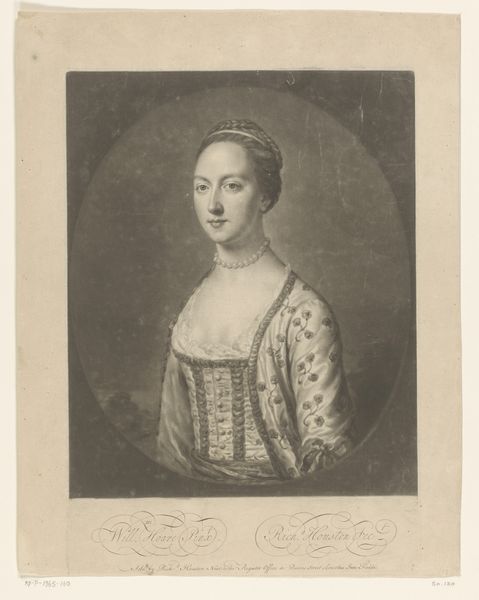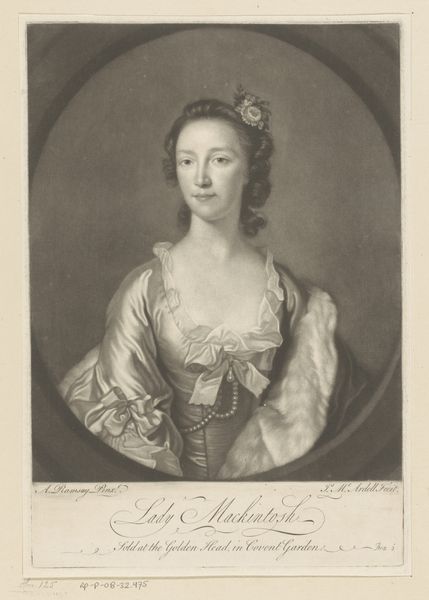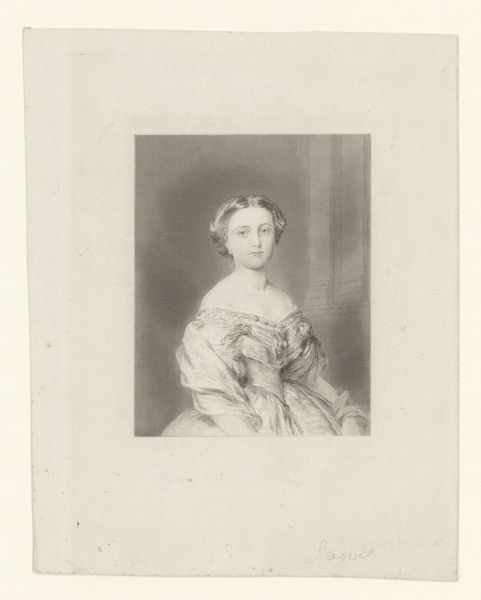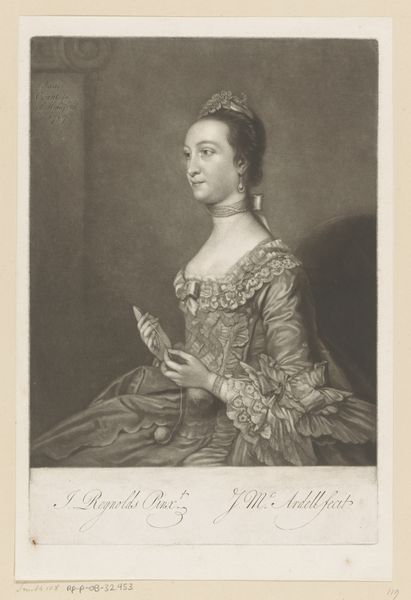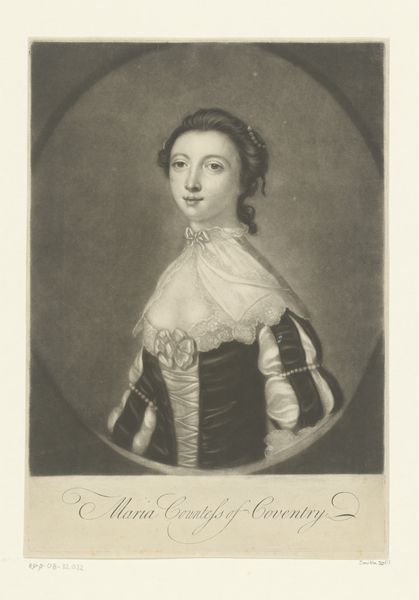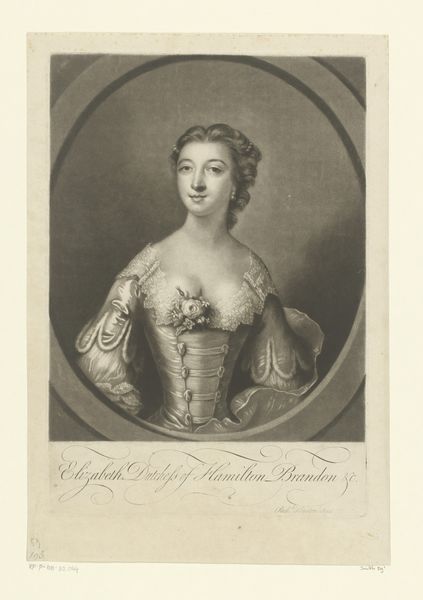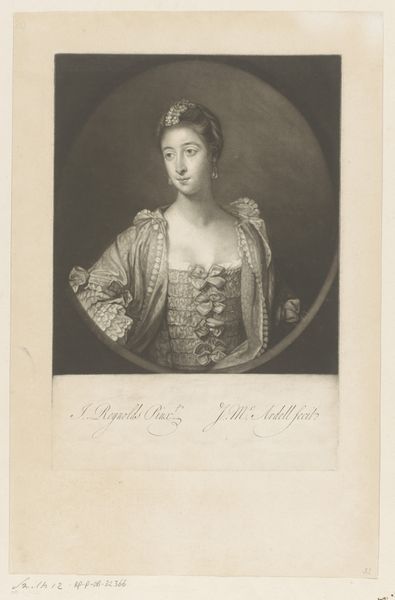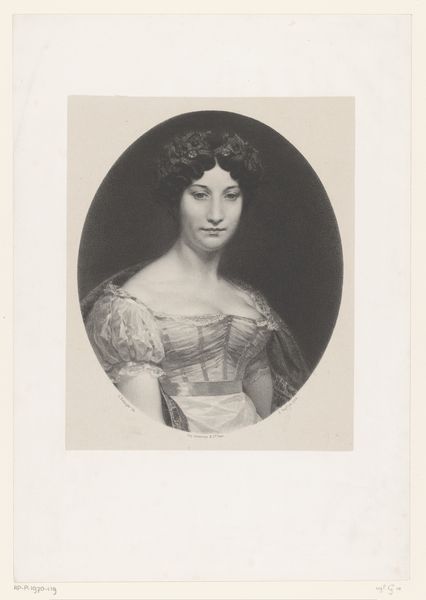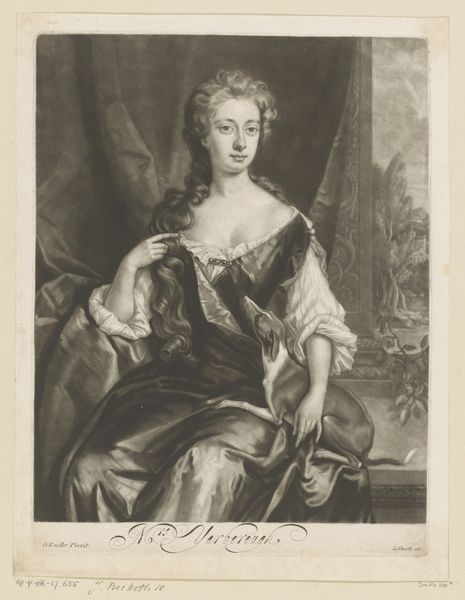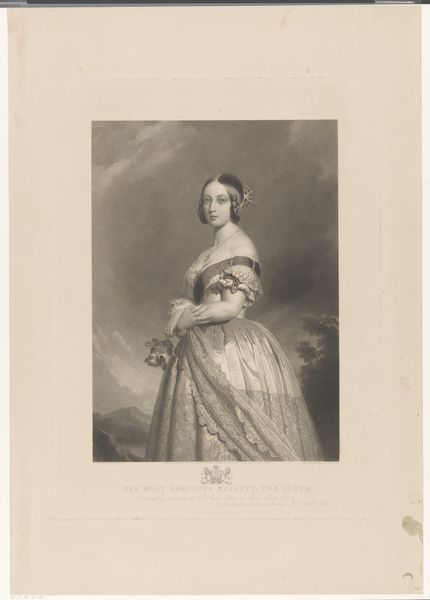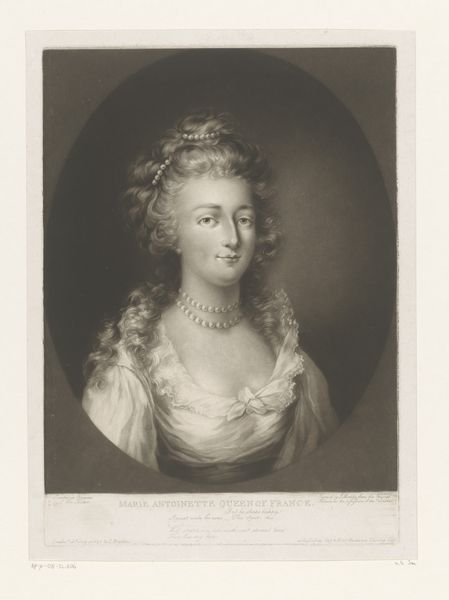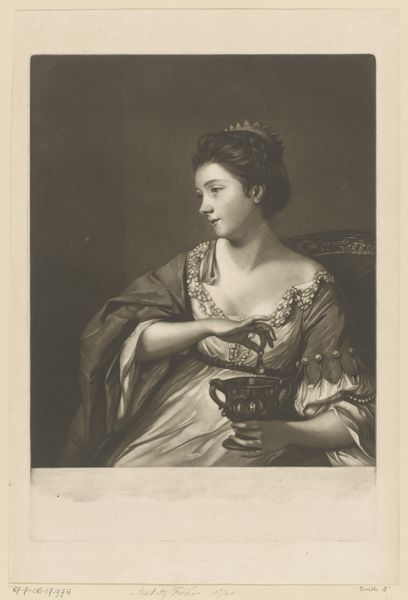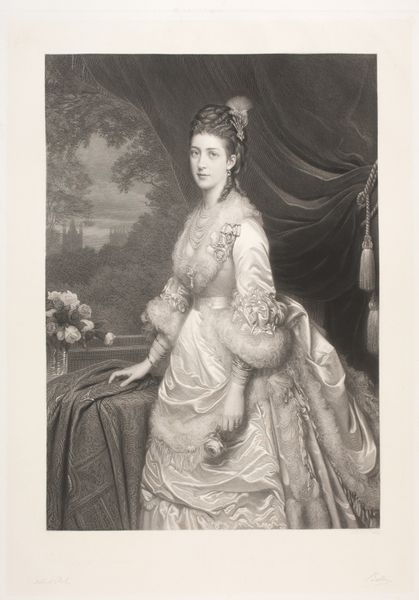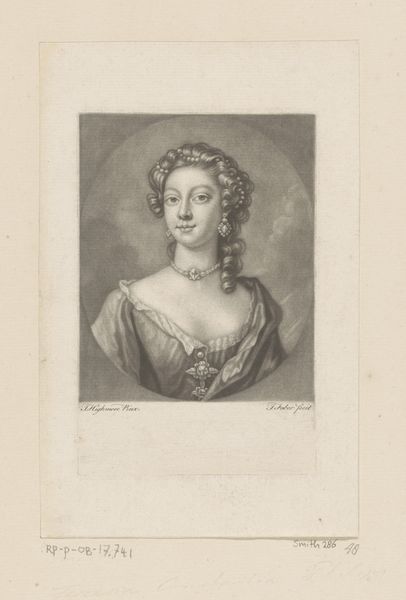
engraving
#
portrait
#
academic-art
#
engraving
#
rococo
Dimensions: height 321 mm, width 225 mm
Copyright: Rijks Museum: Open Domain
Editor: This is "Portret van Maria Coventry," created around 1751-1753 by James McArdell, held at the Rijksmuseum. It's an engraving, which gives it this beautiful, soft, almost hazy quality. What's striking to me is how this refined portrait was achieved with engraving. How do you see this piece, knowing it’s an engraving rather than, say, a painting? Curator: It's critical to examine McArdell’s engraving within the broader context of printmaking during the 18th century. Consider the labor involved in creating these lines, the skill needed to reproduce the tonality of a painted portrait using only variations in line. Engravings like this democratized access to portraiture. They allowed images of the elite, like Maria Coventry, to be circulated widely. Editor: So, you’re saying its value lies not only in depicting her but in its dissemination of her image? Curator: Precisely. This artwork, existing as a multiple, challenges the unique aura typically associated with paintings. The materials matter: the copper plate, the ink, the paper, the press. How does the materiality of printmaking change how we understand concepts like originality and authorship? How does it relate to labour? Editor: That's a compelling point! I hadn't considered the broader implications of its accessibility and how that plays into its meaning. It sort of becomes a commodity, doesn't it? Curator: Exactly. And further, consider the consumer. Who purchased these engravings, and what role did they play in constructing and perpetuating social hierarchies? The very act of consumption is loaded with significance. Editor: So it’s about the printing and the distribution just as much as the lady in the oval! Curator: The portrait's value doesn’t reside solely in the sitter's likeness. This object functions as a piece of a complex socio-economic machinery. Editor: I never thought of a portrait in this way, thank you. It changes how I consider prints, and what I look for in them.
Comments
No comments
Be the first to comment and join the conversation on the ultimate creative platform.
